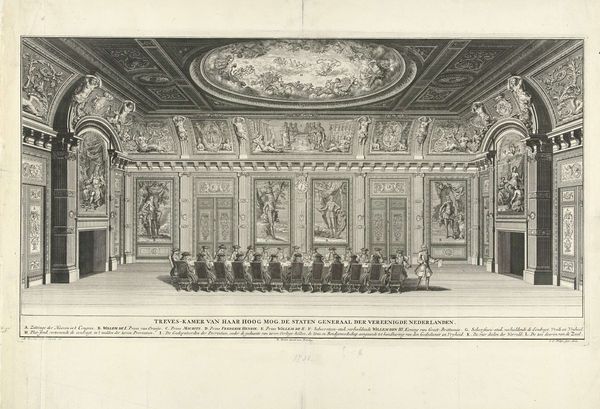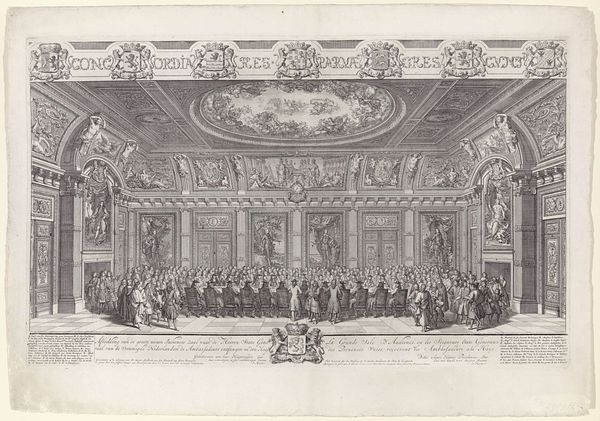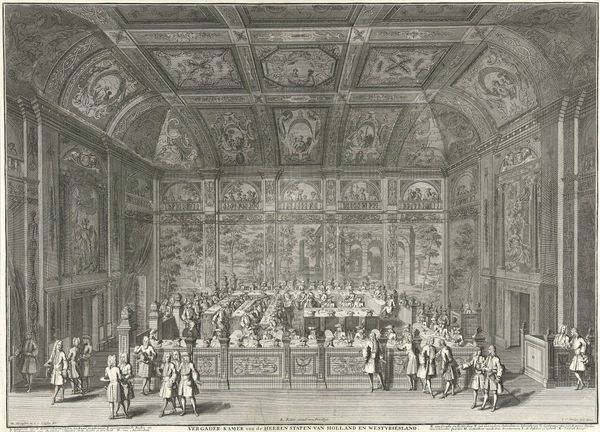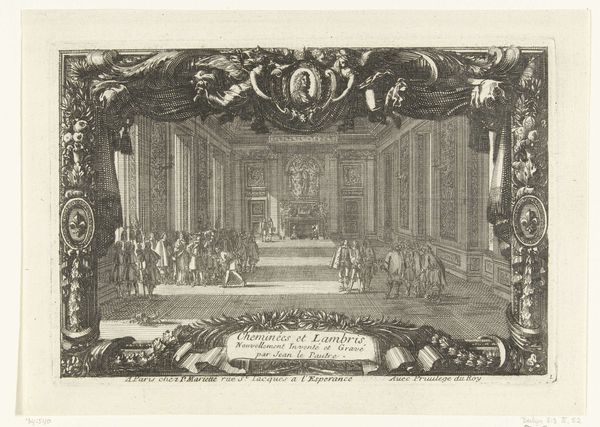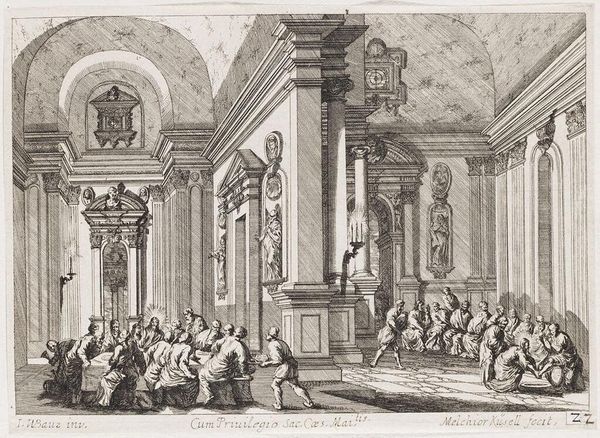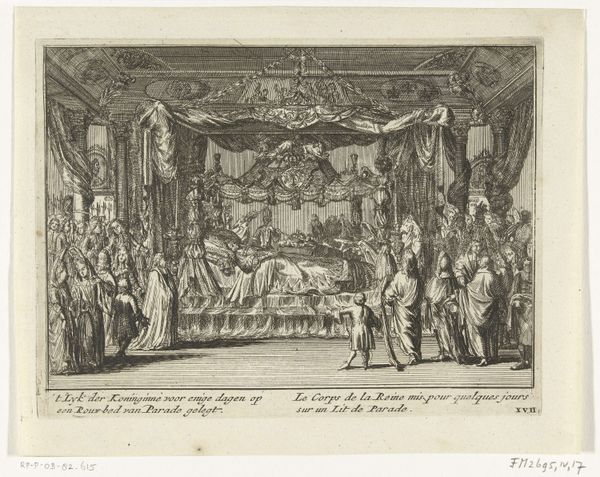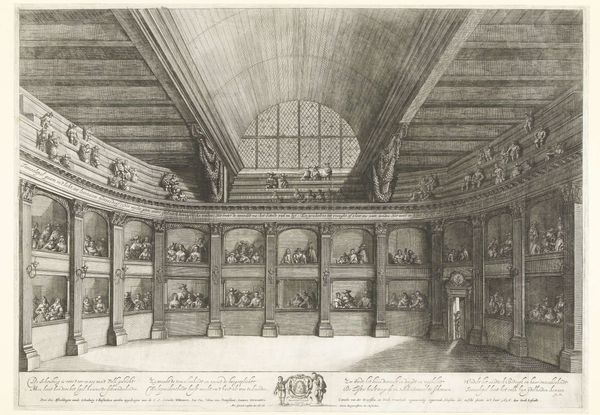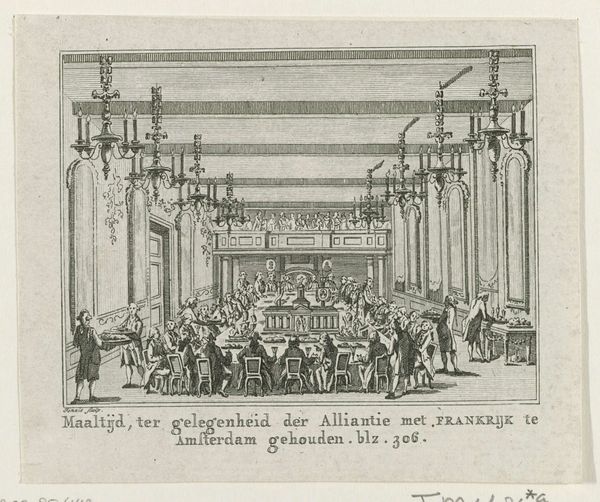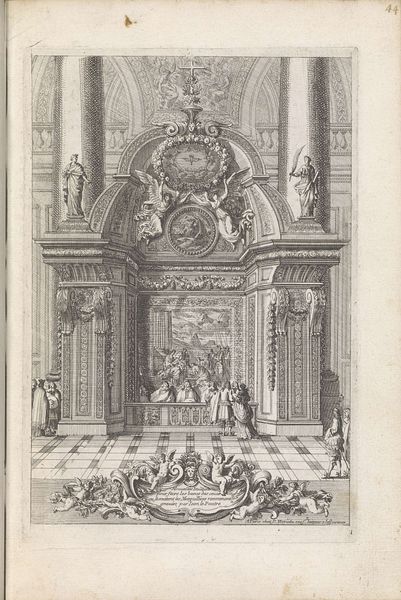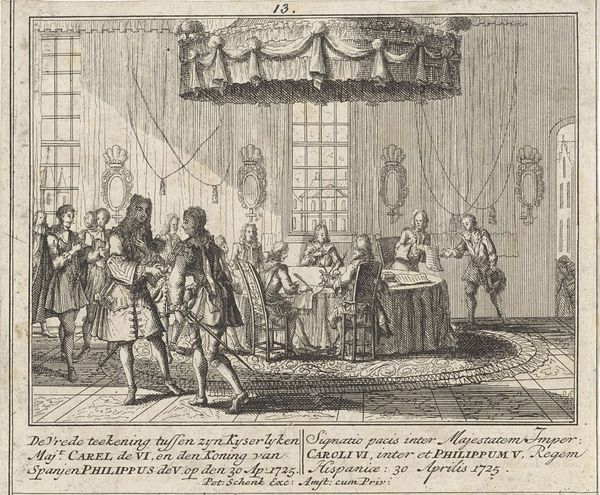
Overleg door de Staten-Generaal over het aanstellen van een Roomse vicaris in Nederland, 1732 1732
0:00
0:00
print, engraving
#
portrait
#
baroque
# print
#
line
#
genre-painting
#
history-painting
#
engraving
#
realism
Dimensions: height 190 mm, width 295 mm
Copyright: Rijks Museum: Open Domain
Editor: This is an engraving from 1732 titled "Overleg door de Staten-Generaal over het aanstellen van een Roomse vicaris in Nederland" which translates to "Deliberation by the States General on the appointment of a Roman vicar in the Netherlands." The whole scene has a formal, almost staged feel. It’s all very grand, from the architecture to the subject matter being depicted. How do you read this image? Curator: Well, the architectural space itself speaks volumes. The "Saal van de Staaten Generaal," as the engraving labels it, isn't just a room. It’s a container of cultural memory, deliberately opulent. Think about the ceiling frescoes – they are not mere decoration. The overall composition reinforces this with its linear emphasis. How does the depicted moment of the Roman vicar engagement tie into Netherlands identity? Editor: You mean the conflict between the Protestants and the Roman Catholics back then? It's subtle here, but I see how the discussion around appointing a Roman vicar could touch on issues of Dutch identity, tolerance, and state authority, right? Curator: Precisely. This scene also highlights the Dutch Republic's struggle to balance religious freedom with political stability. But think, too, of the individuals depicted; though realistically rendered they embody ideals. Look at the text included at the bottom of the engraving; the characters named become figures. Notice that these individuals are symbolic, participating in the ongoing theater of governance. Editor: I do notice how it is "staged," yet real people are presented. I’m starting to understand how this historical scene carries all this emotional and political weight beyond its mere visual representation. Curator: Absolutely. By meticulously depicting this event, the artist tapped into the symbols that would resonate with contemporary audiences and ensure the story’s survival. Consider the symbolism embedded within the visual elements, like those ornate walls, a powerful tool to communicate ideas. What a memory we create! Editor: It’s a good reminder to always consider the cultural memory and societal context when analyzing artworks. I have to admit that there’s more to it than meets the eye. Curator: Indeed, and this work stands as a beautiful bridge between the historical moment and our modern understanding.
Comments
No comments
Be the first to comment and join the conversation on the ultimate creative platform.
